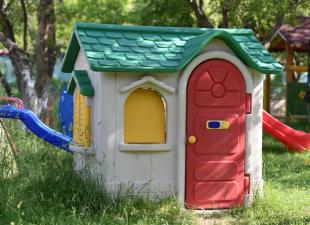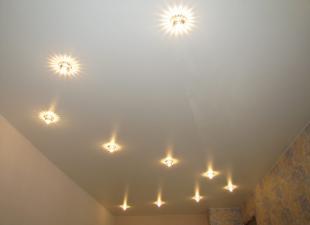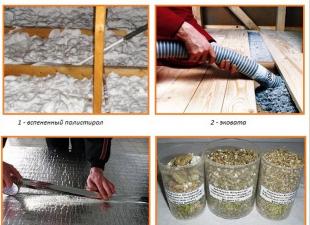Content
For heating private houses, the simplest method is most often used: installing a circulating heating system. The coolant heated in the boiler circulates through the pipe system, heating the radiators with its heat, and they heat the air in the room. A significant drawback of such systems, especially when small children live in the house, is that the air near the floor itself does not warm up enough. In this case, you can make do-it-yourself baseboard heating, which will be the best additional solution when heating a private house.
Features of plinth heating
Skirting heating classification
Skirting heating networks are classified into two types:
- electrical;
- water.
The main elements of water baseboard heating are plastic, oxygen-permeable pipes, a distribution manifold, baseboard batteries.
A plinth heating system is installed in addition to the main heating of an individual house only when the coolant heats up by less than 85 ° C, and the pressure in the "central unit" does not exceed 3 atmospheres. Restrictions that should be taken into account when installing the system are imposed due to the possibility of water hammer.
When installing a water baseboard heating system, you must adhere to these instructions:
- copper pipes should be preferred to ordinary PVC pipes;
- a heat exchanger is installed that takes heat from the main heating and is built into the system using special copper plates;
- all batteries can be fitted with thermostats;
- a servo drive is installed on the distribution manifold;
- put a manometer, thermometer, circulation pump.
 Water baseboard heating
Water baseboard heating Electric baseboard heating is implemented in a simpler way. The main element of the system is a specific radiator unit with a heating element. The tubular electric heater is placed in the lower radiator tube, and the supply cable runs in the upper one. This type of baseboard heating cannot be used in rooms with high air humidity.
The system is powered from a standard 220 V socket.
The principle of operation of baseboard heating
The principle of operation of baseboard heaters is in many respects different from standard batteries that heat the air in the room, thanks to the well-heated coolant enclosed in them. Skirting radiators work due to the effect of warm air "sticking" to the nearest surface, in our case - to the wall.
Radiators are located along the entire contour of the room or only in some areas, but in any case along the length of the walls. The heating elements are hidden in leaky boxes with two slots at the top and bottom. Air seeps into the box through the gap closest to the floor, warms up to the set temperature, but is not distributed to the sides, but spreads up the wall. That is, not all the air in the room is immediately heated, but only a small area of the wall near the baseboard. Then the heat from the walls enters the air and provides uniform heating of the entire room.
 The principle of heating a room with a baseboard radiator
The principle of heating a room with a baseboard radiator Each of the elements of the baseboard battery must have high thermal conductivity, and therefore, in most cases, copper and aluminum are used for their manufacture. It makes no sense to heat baseboard radiators to the maximum temperature - a temperature of 40 ° C is enough. With such heating, the wall surface temperature is 2-4 degrees lower, that is, it is completely safe for children and pets.
Advantages and disadvantages of baseboard heating
Installing baseboard heaters has both advantages and disadvantages.
The undoubted advantages include:
- absent convection effect, accompanied by dusty rooms;
- even distribution of heat throughout the room;
- the presence of infrared heat, which has a positive effect on human health;
- lack of accumulation of warm air at the ceiling;
- high speed of installation work;
- a great addition to the interior, decorated in any style;
- energy savings due to significantly less heating of the coolant;
- maintainability of each element of the system;
- the ability to adjust the desired temperature in each room.
 Skirting-type heating is economical and efficient due to the low temperature of the coolant
Skirting-type heating is economical and efficient due to the low temperature of the coolant It should be noted that a water baseboard heating system can also be used to cool rooms, for which it is filled with cold liquid. At the same time, in order to avoid the appearance of condensation on the circuits, it is important to maintain the optimum fluid temperature at a level above the dew point.
Skirting-type heating also has its drawbacks, which should be attributed:
- a fairly high starting cost, both of the set of equipment itself and of the installation work;
- a small length of the circuit - the length of each should not exceed 15 running meters, otherwise the heating efficiency is noticeably reduced;
- restrictions in the installation of decorative overlays on the radiator associated with a decrease in heat transfer;
- warping of the film wall decoration due to the tight fit of the radiators to the surface;
- the need to keep the room more free, since the placement of cabinet furniture in the immediate vicinity of the walls has a significant impact on the efficiency of heating.
The installation of a plinth heating system is carried out in almost the same way as the installation of a traditional system, with the exception of some nuances. Of course, in such an important matter it is best to trust the experience and skill of professionals, but to reduce financial costs, you can do the work yourself.
 Self-assembly of the "warm plinth" system
Self-assembly of the "warm plinth" system  Step-by-step installation of the "warm plinth" system
Step-by-step installation of the "warm plinth" system Electrical system
The electrical heating system is designed in almost the same way as the water heating system, only instead of a heat exchanger, copper pipes are installed in it.
Such a system consists of:
- placed inside a silicone cable and a heating rod capable of withstanding temperatures up to 180 ° C;
- heat shrink tubing;
- earth clamp;
- heating register;
- connector;
- metal bases;
- fasteners;
- decorative elements.
Before proceeding with the installation, you should determine the required power of the radiators - so as not to buy a model that is too cold or too warm. In the calculations, the average power value can be taken on the order of 100 W / m 2, but depending on the temperature in the region of residence, this value can be changed up or down.
 Electric skirting system
Electric skirting system Do not lay wires on the floor during installation! They should be located 1 cm above floor level.
The system installation process can be divided into several stages.
First of all, the wall is marked. Insulating tape is glued between the wall and the body.
Then, for the subsequent laying of network cables at a distance of 40 cm from each other, fasteners are mounted.
The network can now be connected to power. For this, a thermostat is used, hanging at a distance of 1.5 m from the floor. Before turning on the baseboard heating radiator, the device should be checked and debugged.
At the end of the work, external decorative elements are fixed.
Water heating
In order to install water heating radiators you will need:
- metal-plastic pipes;
- thermal insulation;
- plastic or metal adapters;
- manifold with taps;
- skirting water convectors with decorative plugs and covers;
- set of tools.
Work begins with installing the collector and connecting it to the main heating system. At the same time, the system itself can be powered by a gas, liquid, electric, solid fuel or universal boiler - the type of heater does not matter, but it should be remembered that the pressure in the system should be no more than 3 atmospheres.
Then, taking the area of the room as a basis, you need to determine the required power of the radiators. If necessary, baseboard heating radiators can be taken with higher characteristics, while installing them not on all walls, leaving free space for built-in or cabinet furniture, but only on some of them.
 Plinth wiring of the water heating system
Plinth wiring of the water heating system Next, piping is carried out. Their laying is carried out along the rough floors, reaching the beginning of each contour. As a rule, there are two pipes per circuit - the coolant supply and the "return". Battery adapters come in handy at this point.
When installing baseboard heating, one should not forget about high-quality and reliable thermal insulation that fits between the radiators and the walls.Then it is necessary to fix the base on which the aluminum or copper heat exchanger is installed.
At the end of the installation of the heat exchanger, you can proceed to perhaps the most important stage - connecting the system. Heat exchangers are connected by means of angle or straight adapters. Tighten the union nuts well to prevent leaks (for example, in the event of an unplanned increase in pressure).
After the installation of the circuits is completed, it is imperative to check the tightness of the system. The simplest way is to supply water under pressure, fill the entire system completely and drown it. If no leaks are found, then you can start and check the operation of the entire heating system.
At the final stage, each baseboard heating radiator is decorated with front decorative panels, and the end sections are closed with special elements - plugs.
Results on the topic
Skirting heating systems, developed for a long time, were previously not widespread enough - primarily due to too large heat loss. Modern building materials allow avoiding heat loss, increasing the reliability of the system and extending its service life.
The heating system "warm plinth" allows you to provide comfort and coziness in every home, which is especially important when there are children in the house. When making a choice in favor of one or another type of baseboard heating, it is necessary to take into account the design features, advantages and disadvantages, technical characteristics of each of them.
 parlini.ru Repair of an apartment, a summer residence and a house.
parlini.ru Repair of an apartment, a summer residence and a house.


